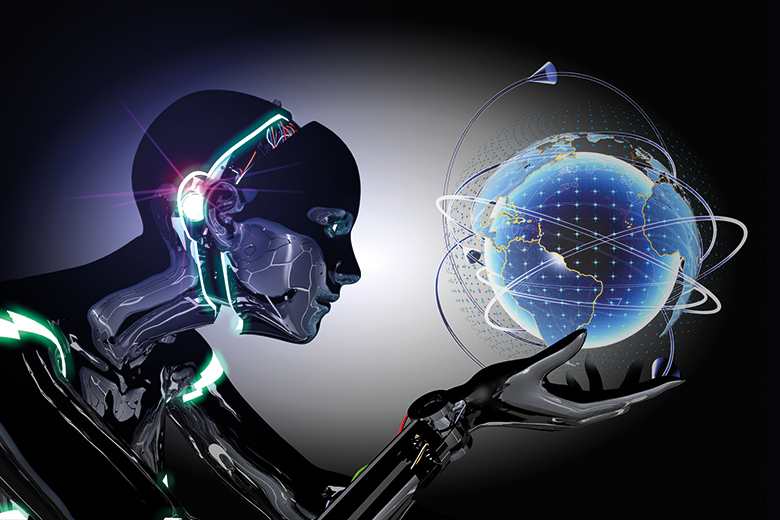
Introduction to AI and Climate Change
The climate crisis looms large, casting a shadow over our planet’s future. As temperatures rise and extreme weather events become more frequent, the urgency for innovative solutions has never been greater. Enter AI climate technology—a powerful ally in our fight against environmental degradation. This cutting-edge technology promises to revolutionize how we monitor, manage, and mitigate the impacts of climate change.
Imagine harnessing vast amounts of data to predict natural disasters or optimize renewable energy production with pinpoint accuracy. With sustainable AI solutions emerging across various sectors, it raises an important question: can technology really save the planet? Let’s explore how artificial intelligence is stepping up to tackle one of humanity’s greatest challenges while considering its potential benefits and limitations along the way.
Current State of the Climate Crisis
The climate crisis is escalating at an alarming rate. Temperatures are rising, and extreme weather events have become more frequent. From devastating wildfires to unprecedented floods, the Earth’s systems are under severe stress.
Scientists warn that we’re approaching critical tipping points. Ice caps are melting faster than anticipated, causing sea levels to rise and threatening coastal communities worldwide. Biodiversity loss is another pressing concern; countless species face extinction due to habitat destruction and changing climates.
Public awareness has surged in recent years, with movements rallying for urgent action. Yet political will often lags behind scientific recommendations. Many countries struggle between economic growth and sustainable practices—a balancing act that seems increasingly precarious.
As emissions continue unchecked, the window for effective intervention narrows. The urgency of our collective response cannot be overstated; time is running out for meaningful change in how we interact with our planet’s resources.
How AI is Being Used in Climate Solutions
AI is transforming the landscape of climate solutions in remarkable ways. One significant application lies in environmental monitoring. Advanced algorithms analyze vast amounts of data from satellites, sensors, and drones to track deforestation, pollution levels, and wildlife health.
In renewable energy management, AI optimizes power grids by predicting demand fluctuations. This helps integrate solar and wind energy more effectively into existing systems.
Moreover, AI-driven models enhance climate forecasting accuracy. These tools enable scientists to simulate various scenarios—providing critical insights for policymakers.
Agriculture also benefits through precision farming techniques powered by AI technology. Farmers can minimize resource wastage while maximizing crop yields by analyzing soil conditions and weather patterns.
Carbon capture technologies are becoming smarter with AI’s assistance. Enhanced analytics improve efficiency in capturing CO2 emissions from industrial processes. Each innovation brings us a step closer to combating climate change effectively.
Benefits and Limitations of AI in Addressing Climate Change
AI technology offers remarkable benefits in the fight against climate change. It can analyze vast datasets, identifying patterns that humans may overlook. This capability enhances predictive modeling for extreme weather events, allowing communities to prepare better.
Moreover, AI optimizes energy usage in smart grids and improves efficiency in renewable sources like solar and wind. These sustainable AI solutions help reduce carbon footprints significantly.
However, limitations exist. Data bias can skew analyses, leading to misguided initiatives. Additionally, reliance on technology might shift focus away from grassroots actions needed for real change.
The development of AI also consumes substantial energy resources itself. If not managed properly, this could counteract its positive impacts on sustainability.
Balancing these advantages with their challenges is critical as we explore deeper integration of AI climate technology into our environmental strategies.
Ethical Considerations of Using AI in Climate Action
The rise of AI climate technology brings with it a plethora of ethical considerations. As we harness advanced algorithms to tackle environmental challenges, questions about data privacy and surveillance emerge. Who owns the vast amounts of data collected? And how is it being used?
Another concern is bias in AI models. If these systems are trained on flawed datasets, they may perpetuate inequalities or fail to address the needs of marginalized communities vulnerable to climate change.
Additionally, there’s the risk that reliance on technology could overshadow grassroots efforts. Communities might become sidelined as corporations prioritize tech-driven solutions over local knowledge and sustainable practices.
Transparency is crucial in developing sustainable AI solutions. Stakeholders must understand how decisions are made by algorithms impacting their lives and environments. Engaging diverse voices in this conversation ensures that solutions remain just and equitable for all stakeholders involved.
The Future of AI and its Potential Impact on the Environment
The future of AI in tackling climate challenges is brimming with possibilities. As technology advances, we can expect more sophisticated models that predict environmental changes with impressive accuracy.
Imagine machines analyzing vast amounts of data to forecast extreme weather patterns or track biodiversity loss. This capability could significantly enhance our understanding of ecosystems and inform conservation strategies.
AI-driven innovations are also paving the way for sustainable energy solutions. Smart grids powered by AI optimize electricity use, reducing waste and lowering carbon footprints.
Moreover, AI’s role in environmental monitoring cannot be overstated. From satellite imagery analysis to real-time pollution tracking, these tools empower us to make informed decisions swiftly.
As businesses adopt these technologies, they will not only increase efficiency but also contribute positively to the planet’s health. The integration of AI into sustainability efforts has the potential to reshape our approach toward a healthier environment entirely.
Conclusion: The Role of Humans in Combating Climate Change with AI
As we navigate the complex landscape of climate change, it becomes increasingly clear that technology alone cannot save our planet. While AI climate technology and sustainable AI solutions present valuable tools for combating environmental challenges, human intervention remains crucial.
Collaboration between tech developers, policymakers, and communities is essential in shaping how AI is applied to address climate issues effectively. Education about these technologies can empower individuals to make informed decisions and advocate for responsible practices.
Moreover, ethical considerations must guide the deployment of AI in environmental monitoring and other areas related to sustainability. Ensuring equitable access to these technologies will help minimize disparities among communities facing the brunt of climate impacts.
The future holds immense potential when humans work hand-in-hand with AI innovations. By leveraging diverse perspectives and expertise, we can create a comprehensive approach that not only utilizes cutting-edge technology but also prioritizes compassion for our environment.
Addressing climate change requires an integrated effort where both artificial intelligence and human ingenuity play integral roles in fostering a more sustainable world.








